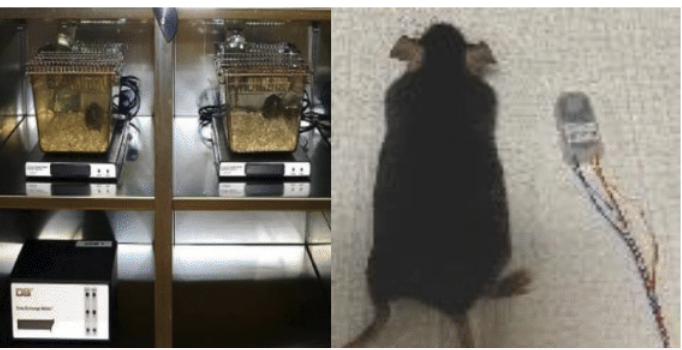Angelman Syndrome is a rare neurogenetic condition that leads to developmental delays and motor and speech impairments
The California Institute for Regenerative Medicine (CIRM) recently awarded David Segal, a professor from the Department of Biochemistry and Molecular Medicine at the UC Davis School of Medicine, with the Discovery Stage Research Project (DISC2) award for his research on a rare neurogenetic disease called Angelman Syndrome.
CIRM’s unique and competitive Quest Awards Program promotes the “discovery of promising new stem cell-based and gene therapy technologies that could be translated to enable broad use and ultimately improve patient care,” according to their website. For Segal, this grant is crucial in facilitating the translation of his research — along with the collaborative efforts of the labs of Jill Silverman and Kyle Fink — from the lab bench to the patient bedside for a disease with no current treatment in place.
Silverman, a professor in psychiatry and behavioral sciences at the UC Davis Mind Institute, described the rarity of the Angelman Syndrome.
“The Angelman Syndrome is a rare disorder that occurs in about one in 15,000 to 20,000 births,” Silverman said. “When you combine them, the overall effect becomes one in 7,000. Altogether they’re not actually rare anymore; they’re common. And the key is we just have to figure out one cure that we hope will be able to help.”
For a disease that is rare, yet occurs frequently enough to demand attention, Segal, Silverman and Fink set out on the forefront of gene editing technology to find one cure that may pave the way for finding cures for other rare diseases.
Angelman Syndrome is a rare condition that leads to severe developmental decay, motor impairments, difficulty with ambulatory movements and emulation of speech due to the loss of ubiquitin ligase E3A (UBE3A) gene expression in the brain. To restore such gene expression, Segal and his colleagues are employing a cousin of the CRISPR-Cas9 gene editing technique widely used in mouse models to be translated in clinical therapy.
“We are using a member of the CRISPR-Cas family, and many people have heard of CRISPR-Cas protein as a nuclease that edits DNA, and that’s mostly done with the so-called Cas9 proteins,” Segal said. “We’re using a cousin of that, the Cas13, and instead of working on the DNA, it looks to target a piece of RNA. There’s an RNA that’s kind of holding that gene back from being expressed so if we could target that RNA with the Cas13, we think that UBE3A can then be turned on and expressed in the brain.”
Fink is an assistant professor in the UC Davis Department of Neurology, and his lab specializes in translating what Silverman and Segal test in mouse models into usable technology in potential clinical trials. Testing the gene editing approach Segal has delved into, Fink is working with pluripotent stem cells to be turned into neurons for patients with the Angelman Syndrome.
“We’ve been working with the stem cells for a while and understanding the duration of how long we have to maintain them and what are the necessary factors to push them into neurons,” Fink said.
Segal expressed gratitude for a grant that is difficult to come by: the $1.4 million, which the three labs are trying to receive in order to fund the Angelman Syndrome project.
“CIRM is a special resource that we have here in California that just really supports stem cell research,” Segal said. “In this latest version, they are also supporting gene therapy as well, so they’re really focused on translating these kinds of molecular research and molecular therapies to treating diseases in California and across the world. We applied to that and were ranked as the top grant in the state in that category across over 100 grants.”
The future for Angelman Syndrome and gene editing technology is ever evolving. Silverman echoed these sentiments in her work with her colleagues as an opportunity to inspire other companies and researchers to support research for rare diseases like Angelman Syndrome.
“The idea and enthusiasm around gene editing and gene-based therapies and stem cell-based therapies is that we sort of just need one success story,” Silverman said. “Things aren’t so easy as copy-paste or copy and replace, but if […] we’re able to get one, which we have one molecular therapy now in a clinical trial, that’s a success story for one rare disease. There’ll be one in 7,000 people, as opposed to one in 20,000 people. And that paves the way for all rare disorders and many neurodevelopmental disorders.”
Written by: Brandon Nguyen — science@theaggie.org





